|
Dougga
and THUGGA
Classified World Heritage of UNESCO since 1997
Situated about a hundred kilometers from Tunis, on uneven terrain,
and therefore not designed according to the classic checkerboard plan of Roman town planning, Dougga of its ancient name Thugga,
is certainly the most Majestic of Tunisia and the best preserved of the Maghreb. Its ruins are situated on a hill
600 m above sea level and spread over 25 ha in a fertile area of northern Tunisia.
Not less than 3 hours are needed to properly visit this site.
There is a refined architecture and an elaborate urbanism with amphitheater, capitol, forum, thermal baths, mausoleums, temples,
luxurious homes and water evacuation system. All these vestiges reflect a history bearing the imprints of
Berber,
Punic and Roman civilizations.
Thugga is at first an important Phoenician colony, one of the most important cities of the kingdom of Massinissa. After the fall of Carthage in 146 BC, it preferred the alliance of the Numidians of Massinissa to that of the Roman conqueror. The Berber city remains administratively autonomous for almost a century. But in 46 BC, it was annexed to the new Roman province of Africa by Caesar. The city grew rapidly and participated in the general rise of Roman Africa in the 2nd and 3rd centuries.
|
|
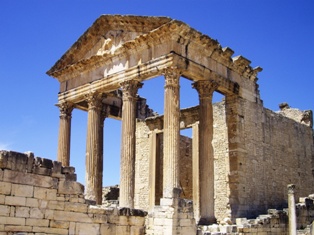
Municipality under the reign of Septimius Severus, Thugga was erected in colony in 261. Affected by the Vandal invasion, the city regained great prosperity under the Byzantine rule. When the Arab conquest occurred, unlike many Tunisian cities, the city will not be abandoned by its inhabitants. It was only around 1960 that they were rehoused in a village built by the authorities, called
New Dougga. They are the direct descendants of the ancient Thuggenses.
|
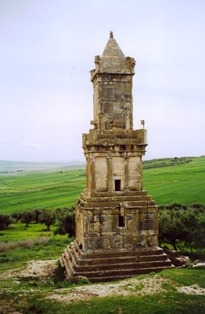
The Libyco-Punic mausoleum is the only monument of this type known in the ancient world. It was built at the beginning of the 2nd century, to serve as burial
for the Numidian chief, Afeban. This monument is 21m high. It is always well preserved, notwithstanding the malevolence of the English Consul, who, in 1842, degraded it by tearing
off the bilingual plaque which adorned it. It is now in the British Museum. It is this inscription which made it possible to understand the Libyco-Punic language.
|
In 1842, in order to detach the royal inscription which it ornapt, the British Consul General of Tunis, Sir Thomas Reade, damaged it very seriously.
Its restoration was conducted by a French archaeologist, Louis Poinssot. The bilingual Libyan and Punic plate, which allowed the deciphering of the Libyan characters, can be found
in the British Museum in London. The text says, "Here is the team of Atban, son of Iepmatah, son of Palu: stone builders Aborsh, son of Abdashtart Mengy, son of Oursken; Zamar, son of Atban,
son of Iematah,
son of Palu; And among the people of his house, Zezy, Temen, and Oursken; The carpenters Mesdel, son of Nenpsen, and Anken, son of Ashy; The smiths Shepet, son of Bilel and Pepy, son of Beby. "
|

Punic version |

Libyc version |
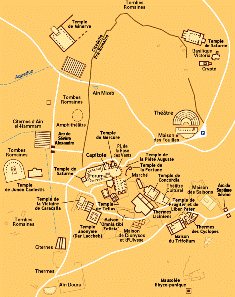
Map of
Dougga
|
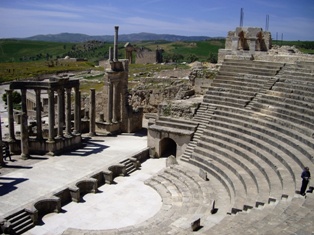
Built between 166 and 169, the Dougga Theater can accommodate 3,500 spectators and count 25 rows of bleachers. Well preserved, it offers a splendid view on the plain from
its terraces
|
How to get to Dougga?
From Tunis, take the GP5 to Téboursouk (100km), via Medjez El Bab and Testour, then the MC74 for 6 km to Dougga.
Where to eat and drink?
At the entrance to the ruins is a cafe, pleasant to cool off, under the trees.
At the bottom of the ruins is the Mercure bar and restaurant. The setting is nice and the food is impeccable.
Where to sleep?
Hôtel Thugga tel 78 465 713 fax 78 466 721 9040-Téboursouk
tel 78 465 713 fax 78 466 721 9040-Téboursouk
|
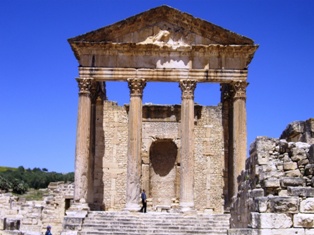
Dedicated to the triad of Jupiter, Juno and Minerva, Dougga's Capitol is one of the most important monuments of Roman Africa.
|
|
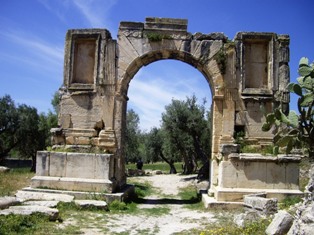
Severus Alexander Arch
|
|
|
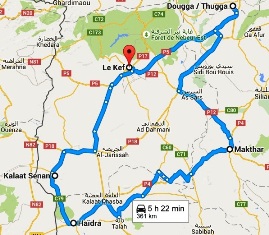
Circuit of dream if you are motorized, you will discover the vestiges of ancient Tunisia, the verdant landscapes of the deep Tunisia and
a historical city Le Kef. To sleep we recommend the guest houses in and around
Le Kef.
|
|
ARCHEOLOGY IN TUNISIA
Other sites to visit
|
|
|
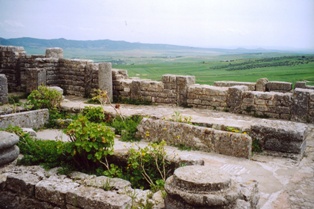
Roman house
|
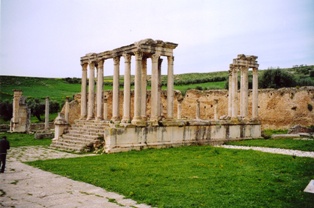
Temple of Mercury
|
|
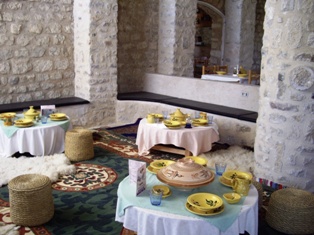
At the bottom of the ruins is the Mercure bar and restaurant. The setting is nice and the food is impeccable.
TEl: (00 216) 98 621 471
Fax: (00 216) 78
405 471
|
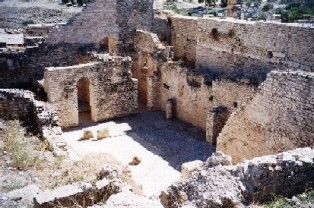
Around the Licinians baths there are sumptuous villas, some of which still retain interesting mosaics, reflecting a very high standard of living.
|
|
|
|